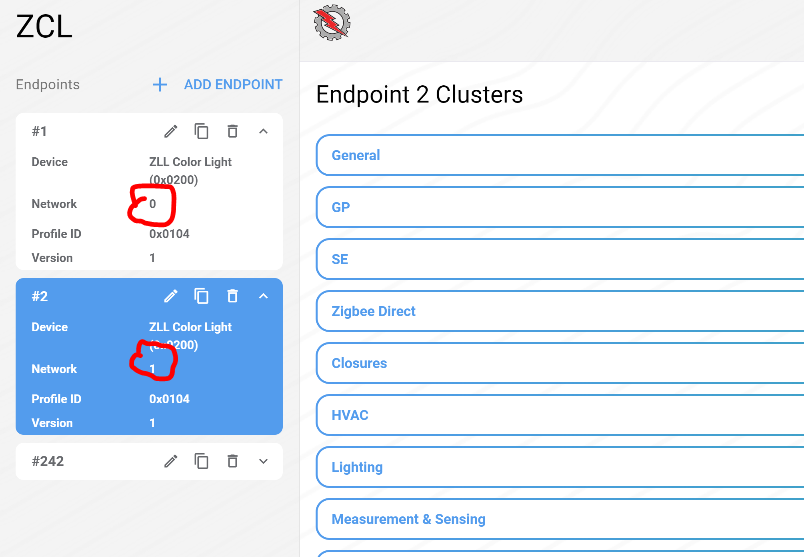Create a SleepyToSleepy Shade application
If you have correctly installed the S2S package you should be able to access the following shade example:
Select this example, it will be used as a basis for our S2S + ZSED application.
Modify the example to work with multi-network
In application the S2S profile will be on network interface 0 and the ZSED profile will be on network interface 1.
The following components needs to be added to the example:
- Multi network
- Network Steering
The following components need to be modified:
- End Device Support -> Set the ZSED parameters to what is required by your application)
- Zigbee Device Config -> Add a secondary network as shown below:
Multi-network feature is not compatible with ZLL functionality. You need to remove all the ZLL relative components:
- ZLL Commissioning Common
- ZLL Commissioning Server
- ZLL Identify Server
- ZLL Utility Server Cluster
- Zigbee light link
- Zigbee Light Link (Library)
On BRD4194A, you will need to remove the "Simple Led" component and its instance otherwise application will crash.
To evaluate low power feature, you need to:
- Remove the "Zigbee LCD Display"
- Select "USART0" instead of "EUSART0" for the "vcom " component
With ZAP tool, an endpoint needs to be created for the secondary network with all the clusters needed by your application:
Modify the application code
In app.c add the following code:
void buttonEventHandler(sl_zigbee_af_event_t * event)
{
sl_zigbee_af_event_set_inactive(buttonEvent);
if (lastButton == BUTTON0) {
sl_status_t status = sl_zigbee_af_push_network_index(1);
sl_zigbee_network_status_t state = sl_zigbee_network_state();
uint8_t index = sl_zigbee_get_current_network();
sl_zigbee_af_app_println("Net %d state: %d, status: %d", index, state, status);
if (state == SL_ZIGBEE_NO_NETWORK)
{
sl_zigbee_af_network_steering_start();
}
else
{
sl_zigbee_af_fill_external_buffer((ZCL_CLUSTER_SPECIFIC_COMMAND
| ZCL_FRAME_CONTROL_CLIENT_TO_SERVER),
ZCL_ON_OFF_CLUSTER_ID,
ZCL_TOGGLE_COMMAND_ID,
"");
sl_status_t status;
#if SEND_MULTICAST
sl_zigbee_af_get_command_aps_frame()->profileId = sl_zigbee_af_profile_id_from_index(0);
sl_zigbee_af_get_command_aps_frame()->sourceEndpoint = sl_zigbee_af_endpoint_from_index(0);
status = sl_zigbee_af_send_command_multicast_to_bindings();
sl_zigbee_af_app_println("Sent to multicast group: 0x%02X", status);
#else
sl_zigbee_af_get_command_aps_frame()->sourceEndpoint = 2;
sl_zigbee_af_get_command_aps_frame()->destinationEndpoint = 1;
sl_zigbee_af_fill_command_on_off_cluster_toggle();
index = sl_zigbee_get_current_network();
status = sl_zigbee_af_send_command_unicast(SL_ZIGBEE_OUTGOING_DIRECT, 0x0000);
sl_zigbee_af_app_println("Net %d status: %d", index, status);
sl_zigbee_af_app_println("Sent to unicast: 0x%02X", status);
#endif
}
status = sl_zigbee_af_pop_network_index();
} else if (lastButton == BUTTON1) {
Test the application
Leave any previously joined network
To leave network, either erase flash of your device before flashing or use the followings CLI commands:
> net set 0
> leave
> net set 1
> leave
Join a S2S network on interface O
> net set 0
> custom s2s-commission 0 15 3 0xabcd 0x2222
Join a S2S network on interface 1
Just press button 0 of brd4194a to join an openned network with interface 1


